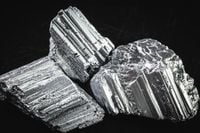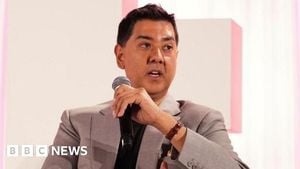Rare earth minerals may not make the front page as often as oil or gold, but they are the unsung heroes powering everything from smartphones and electric vehicles to wind turbines and sophisticated military hardware. Yet, as the world pivots toward cleaner and smarter technology, a new geopolitical fault line has emerged: China’s overwhelming dominance in mining and processing these strategic elements. With China controlling 70% of rare earth mining and a staggering 90% of global processing, its grip on the supply chain has become a source of mounting anxiety for Western nations.
This concern reached a crescendo on October 10, 2025, when Beijing tightened its hold even further, adding five more metals—holmium, erbium, thulium, europium, and ytterbium—to its list of export-restricted rare earths. That brings the total number of controlled elements to 12 out of the 17 recognized rare earths, according to The Economic Times. Now, any foreign company wishing to purchase rare-earth magnets or semiconductors with even a trace—just 0.1%—of these heavy metals must first secure approval from China’s Commerce Ministry and provide detailed end-use plans.
For the United States and its allies, the message couldn’t be clearer. As U.S. Treasury Secretary Scott Bessent bluntly told Fox Business, “This is China versus the world. They have pointed a bazooka at the supply chains and the industrial base of the entire free world, and we’re not going to have it.” Bessent’s warning is not just rhetoric. Washington is now in active talks with European allies, Australia, Canada, India, and other Asian democracies to coordinate a response to China’s export restrictions, Financial Times reports.
Enter Australia, a nation with some of the world’s richest deposits of rare earths and a mining sector that is both technologically advanced and globally competitive. Canberra sees China’s move as an opportunity—a chance to become the West’s trusted supplier and help plug the gaping hole in global supply chains. “Australia equals the periodic table,” declared Australia’s Ambassador to the U.S., Kevin Rudd, according to Bloomberg. “Having it is one thing, knowing how to mine it, as mining is a high-tech business, is another, and we have the world’s biggest and best miners.”
Rudd is not alone in his optimism. With joint investment from the U.S. and Australia, he argues, the country “can meet 30 to 40 of those [critical minerals] without much additional effort, most particularly in terms of processed rare earths.” The United States, for its part, tracks over 50 minerals considered critical for economic and national security, including 17 rare earths and strategic metals like lithium, cobalt, nickel, manganese, and graphite.
On October 20, 2025, Australian Prime Minister Anthony Albanese met with U.S. President Donald Trump in Washington, aiming to cement cooperation on critical minerals. Australia’s pitch is bold: it is offering access to a proposed A$1.2 billion (about US$780 million) critical minerals reserve as a signal of trusted supply, according to The Guardian. The terms are still up in the air, but Canberra is open to the idea of the U.S. government taking equity stakes in Australian supply-chain companies—an approach that reflects a new era of state-capitalism in mining. Washington, no longer content to be a mere customer, is considering becoming a co-owner and strategic partner.
Still, Australia has its own conditions. It needs U.S. investment, technology transfer, downstream refining capacity, offtake guarantees, and security assurances—particularly under the broad umbrella of the AUKUS security pact. The stakes are high: while Australia wants to help the West reduce its reliance on China, it is wary of provoking Beijing, its largest trading partner. As Treasurer Jim Chalmers told reporters in Washington, “We know that American companies desperately need critical minerals, and Australia is very well placed to service that need,” reported Reuters. But Chalmers also stressed Canberra’s desire to maintain stable economic relations with China.
Australia’s ambition is not just talk. Companies like Lynas Rare Earths Ltd. are already making waves. Its Kalgoorlie facility and Malaysian refinery recently became the first outside China to separate heavy rare-earth elements like dysprosium and terbium. In October, U.S. firm Noveon Magnetics partnered with Lynas to supply magnets to U.S. defense contractors—a deal that sent Lynas’s share price soaring to a 14-year high, according to Al Jazeera. Meanwhile, Iluka Resources is developing the Eneabba project in Western Australia, aiming to supply rare-earth oxides for high-tech magnets by 2027. The Australian government is backing Iluka with a A$1.65 billion loan to build a refinery, a move CEO Tom O’Leary says is essential: “Without the strategic partnership we have with the Australian government, a rare earths project would not be economically viable. We expect to be able to supply a significant proportion of Western demand by 2030.”
But there are hurdles. Australia’s reserves, while vast, are only about one-seventh the size of China’s, according to the U.S. Geological Survey. The real bottleneck is refining—an area where China’s decades-old industrial ecosystem and technological edge are tough to match. Separating rare earths is a complex, multi-stage process that produces problematic wastes, including radioactive materials. “They’re chemically very similar, so separating them requires a huge number of stages,” explained Jacques Eksteen, chair of extractive metallurgy at Curtin University, in comments to the BBC.
China’s dominance is no accident. In 2010, after a territorial dispute with Japan, Beijing imposed a seven-week embargo on rare earth exports, shaking global supply chains and prompting countries like Japan to diversify sources—often by investing in Australian projects. The U.S., once a leader in rare-earth mining, has struggled to keep up. Its only active rare-earth mine, Mountain Pass in California, resumed operations in 2017, but most ore still goes to China for processing. New U.S. refining projects remain hamstrung by regulatory hurdles that can take decades to clear. As Mark Smith, CEO of NioCorp Developments, put it, “You can spend a whole career getting a mine up and running.”
For Australia, the challenge is to avoid the so-called “banana republic” trap—relying solely on mining and neglecting advanced manufacturing. Former Prime Minister Paul Keating warned decades ago, “We took the view in the 1970s – it’s the old cargo-cult mentality, ‘we’ll just dig up another mound of rock and someone will buy it from us. If Australia is so undisciplined that it doesn’t deal with these fundamental problems … Then you are gone. You are a banana republic.”
As the world scrambles for secure and sustainable sources of rare earths, Australia’s resource diplomacy stands at a crossroads. The country’s ability to build out its refining capacity, attract foreign investment, and navigate the delicate politics of U.S.-China rivalry will shape not only its own economic future but also the fate of global technology supply chains. The next few years could well determine whether Canberra’s mineral riches become the West’s strategic lifeline—or just another missed opportunity.




